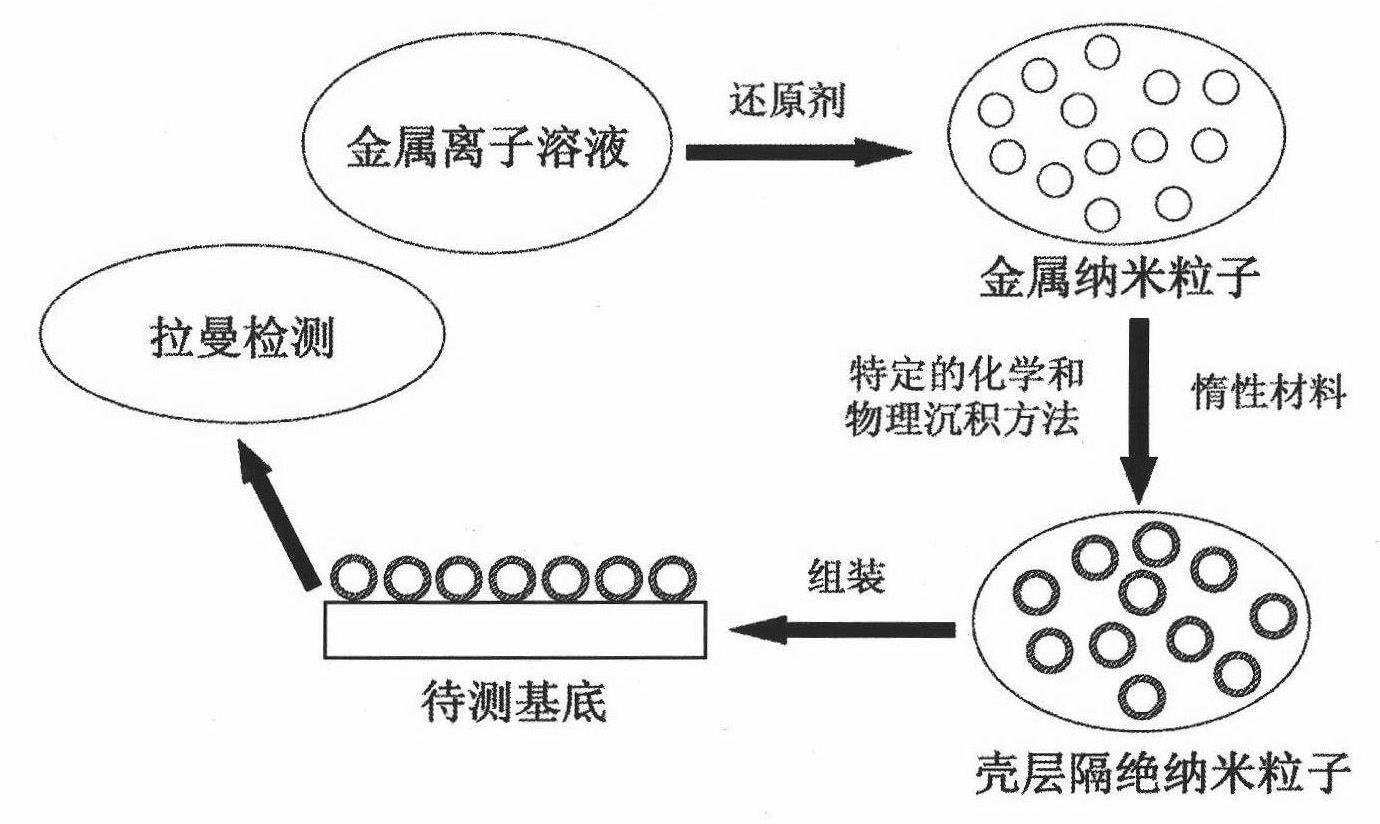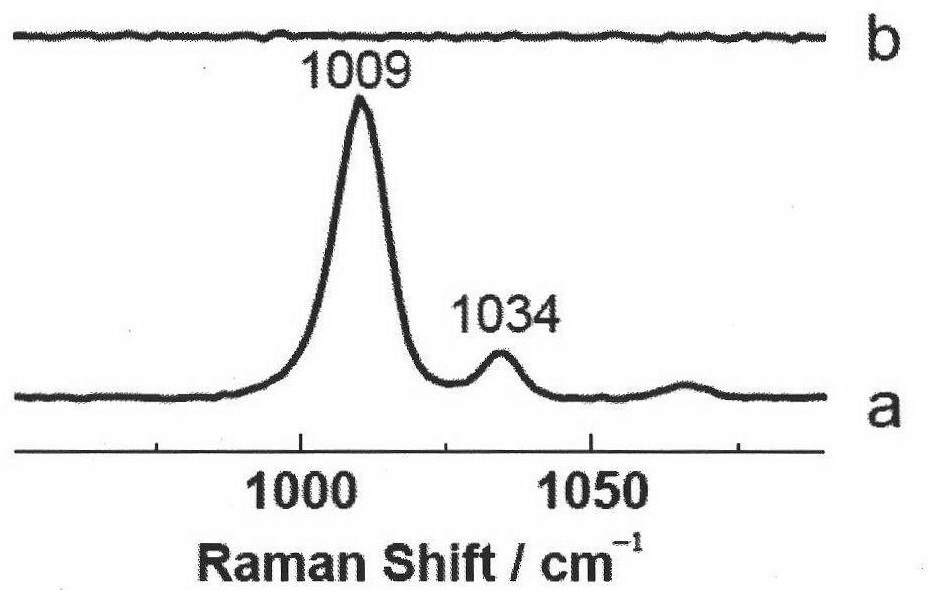Method for enhancing Raman spectrum by using shell isolated nano particles
A nanoparticle and Raman spectroscopy technology, used in Raman scattering, material analysis by optical means, measurement devices, etc., can solve the problems of interference experiments, weak Raman signals, wrong information, etc., to achieve high detection sensitivity, improve Detection sensitivity, preparation method and the effect of simple raw materials
- Summary
- Abstract
- Description
- Claims
- Application Information
AI Technical Summary
Problems solved by technology
Method used
Image
Examples
Embodiment 1
[0039] Preparation of a shell-isolated nanoparticle:
[0040] figure 1 A schematic diagram of the experimental flow for shell-isolated nanoparticles is given.
[0041] Taking thin-shell silica gold-coated core-shell nanoparticles as an example, the specific preparation method is:
[0042] Take 200ml of chloroauric acid aqueous solution with a mass fraction of 0.01%, heat it to boiling under stirring conditions, then add 1.4ml of a 1% sodium citrate aqueous solution, and keep boiling slightly for 40min, the solution gradually changes from light yellow to brownish red , make it fully reacted and then naturally cool to room temperature to obtain a gold nanoparticle sol with a diameter of about 55±10 nm. Take 30ml of gold nanoparticle sol as a seed, add 0.4ml of 1mM aminosilane aqueous solution, stir at room temperature for 15min, then add 3.2ml of 0.54% sodium silicate aqueous solution, stir for 2 minutes, then transfer to a temperature of about 98 In a water bath at ℃, react ...
Embodiment 2
[0045] SERS characterization to detect whether the shell of the shell-isolated core-shell nanoparticle is dense and pinhole-free:
[0046] Synthesized shell-isolated nanoparticles with pinholes (taking thin-shelled silica gold-coated core-shell nanoparticles as an example) and nanoparticles without pinholes were compared, centrifuged and washed twice, and the bottom concentrate was taken to disperse bright On a silicon wafer, after drying, it was placed in a 0.1M pyridine solution for Raman testing.
[0047] image 3 It is the experimental result of Example 2. exist image 3 where the abscissa is the Raman shift. image 3 The middle curve a represents the SERS spectrum of gold-coated silica nanoparticles with pinholes, and there is an obvious 1009cm -1 and 1034cm -1 The characteristic Raman peaks of pyridine on gold. Curve b represents the SERS spectrum of gold-coated silica nanoparticles without pinholes, but there is no Raman peak of pyridine adsorbed on gold. This ex...
Embodiment 3
[0049] Study on the SERS Behavior of Platinum-Hydrogen Bonding on the Surface of Single Crystal Platinum(111) Using Shell-isolated Nanoparticle Enhanced Raman Spectroscopy:
[0050] The assembled shell-isolated nanoparticles (take the thin-shell silica gold-coated core-shell nanoparticle as an example) and the platinum single crystal (111) surface without assembled particles were prepared in 0.1M NaClO 4 SERS experiments were carried out in solution at different potentials.
[0051] Figure 4 It is the experimental result of embodiment 3. exist Figure 4 Among them, curve a represents the SERS spectrum of the platinum single crystal (111) surface without the assembly of thin-shell silica gold-coated nanoparticles, and no spectral peaks in this frequency range were observed. Curve b represents the SERS spectrum on the (111) surface of platinum single crystal assembled with thin-shell silica gold-coated nanoparticles, and there is an obvious 2023cm -1 The characteristic stre...
PUM
| Property | Measurement | Unit |
|---|---|---|
| Particle size | aaaaa | aaaaa |
| Thickness | aaaaa | aaaaa |
| Wavelength | aaaaa | aaaaa |
Abstract
Description
Claims
Application Information
 Login to View More
Login to View More - Generate Ideas
- Intellectual Property
- Life Sciences
- Materials
- Tech Scout
- Unparalleled Data Quality
- Higher Quality Content
- 60% Fewer Hallucinations
Browse by: Latest US Patents, China's latest patents, Technical Efficacy Thesaurus, Application Domain, Technology Topic, Popular Technical Reports.
© 2025 PatSnap. All rights reserved.Legal|Privacy policy|Modern Slavery Act Transparency Statement|Sitemap|About US| Contact US: help@patsnap.com



